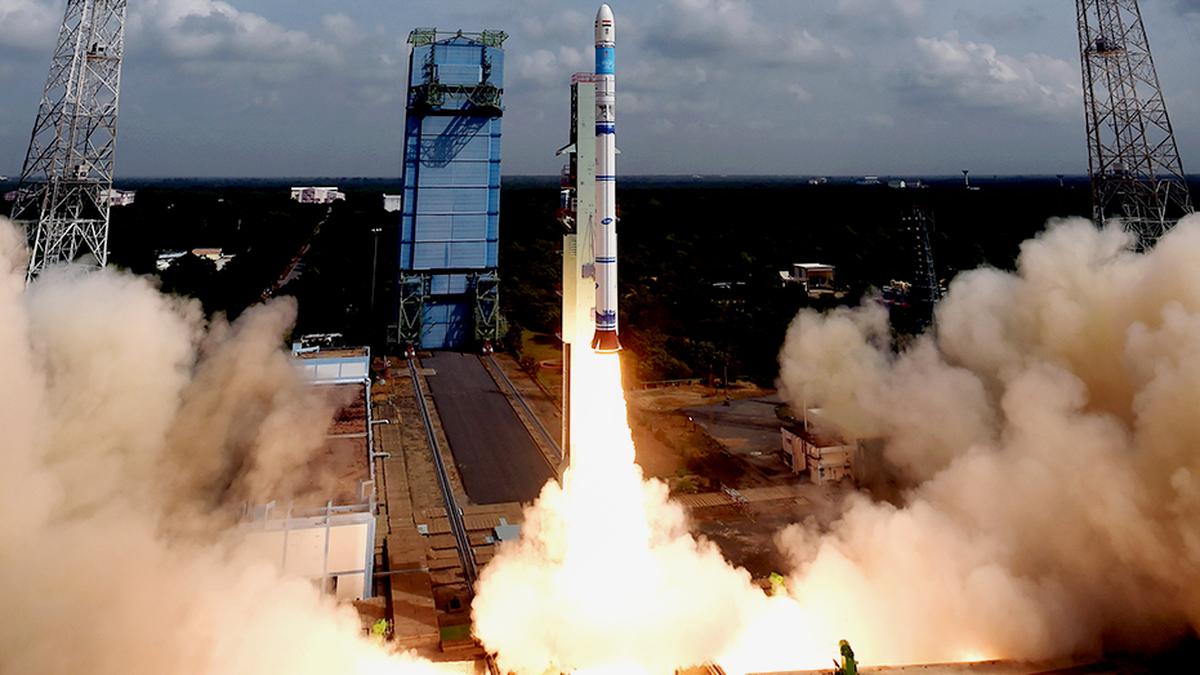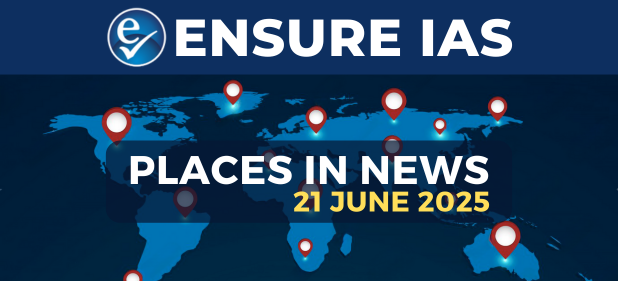- Courses
- GS Full Course 1 Year
- GS Full Course 2 Year
- GS Full Course 3 Year
- GS Full Course Till Selection
- Answer Alpha: Mains 2025 Mentorship
- MEP (Mains Enrichment Programme) Data, Facts
- Essay Target – 150+ Marks
- Online Program
- GS Recorded Course
- Polity
- Geography
- Economy
- Ancient, Medieval and Art & Culture AMAC
- Modern India, Post Independence & World History
- Environment
- Governance
- Science & Technology
- International Relations and Internal Security
- Disaster Management
- Ethics
- NCERT Current Affairs
- Indian Society and Social Issue
- NCERT- Science and Technology
- NCERT - Geography
- NCERT - Ancient History
- NCERT- World History
- NCERT Modern History
- CSAT
- 5 LAYERED ARJUNA Mentorship
- Public Administration Optional
- ABOUT US
- OUR TOPPERS
- TEST SERIES
- FREE STUDY MATERIAL
- VIDEOS
- CONTACT US
NITI Aayog Report on Seaweed Value Chain Development
NITI Aayog Report on Seaweed Value Chain Development
10-08-2024

Focus: NITI Aayog's recent report highlights a roadmap to boost seaweed cultivation in India through research, investment, training, infrastructure, and market development.
Comprehensive Framework
- The NITI Aayog report presents a comprehensive framework addressing environmental concerns, laying out the economic feasibility, and identifying potential sites conducive to seaweed cultivation.
- The methodology adopted for identifying these sites is scientific, considering factors conducive to seaweed growth and the ecological sensitivity of the areas.
- The report discusses methods and economics of on-shore and off-shore cultivation of prominent commercially significant species of seaweed, along with best practices of cultivation, governance, product development, and harvesting followed globally.
Background
- Seaweed refers to numerous types of marine plants and macroalgae that thrive in rivers, lakes, and other bodies of water. Over ten thousand seaweed species are found worldwide and can be broadly classified into three groups:
- Green: Chlorophyta
- Brown: Phaeophyta
- Red: Rhodophyta
- Seaweeds are commercially valuable for their bioactive metabolites, manure, fodder, and cell wall polysaccharides like agar, algin, and carrageenan. They are used in the food, pharmaceutical, cosmetic, and mining industries.
- India, with an Exclusive Economic Zone (EEZ) spanning over 2 million square kilometers and an 8,118-kilometer coastline, supports the livelihoods of about 4 million people. Seaweed farming offers a sustainable and profitable alternative for economic stability and growth, reducing reliance on traditional fishing and diversifying coastal communities’ livelihoods.
Economic Potential
- Under optimal conditions, the net revenue from one hectare (400 rafts) of dry weight might reach up to ₹13,28,000 per year.
- India currently produces less than 1% of global seaweed production, with 33,345 tonnes wet weight per year.
- The total global exports of seaweed and seaweed-based hydrocolloids amount to USD 2.65 billion across 98 countries.
- Major Producers: China, Indonesia, Philippines, Republic of Korea, and Malaysia dominate global trade.
- Korea: Leading in seaweed exports (30% market share).
- China: Major in seaweed-based hydrocolloids (30% market share).
Ecological and Nutritional Benefits
- Seaweed has the potential to address nutritional deficiencies in India.
- Mariculture seaweed’s estimated carbon sequestration rates amount to 57.64 metric tons of CO2 per hectare per year, while pond-cultured seaweeds sequester 12.38 metric tons of CO2 per hectare per year.
Challenges
- Lack of awareness, research and development, and a comprehensive policy framework need to be addressed to develo:p the sector.
Stakeholder Consultations
- The strategy is an outcome of rigorous stakeholder consultations, including national-level organizations, key industries, coastal state and union territory governments, and international experts.
- Multiple rounds of consultations took place over a year, during which deliberations were made to systematically study the value chain, its challenges, and curate a way forward for the seaweed value chain.
Identification of Sites
- Report: "Potential Areas for Seaweed Farming along the Indian Coast" by NCSCM, CSIR-CSMCRI, and ICAR-CMFRI.
- Sites Identified:
- ICAR-CMFRI: 333 sites, with trials and farming at 78.
- CSIR-CSMCRI: 51 sites, with trials and farming at all sites.
- Zones: Categorized into green, amber, and blue zones, with 24,707 hectares identified for cultivation.
Major Seaweed Beds in India
- Locations: Tamil Nadu, Gujarat, Lakshadweep, Andaman & Nicobar Islands, Mumbai, Ratnagiri, Goa, Karwar, Varkala, Vizhinjam, Pulicat, Chilka.
Uses and Benefits
- Nutritional: Source of calcium, phosphorus, vitamins, amino acids.
- Medicinal: Anti-inflammatory, antimicrobial, potential cancer-fighting properties.
- Manufacturing: Used as emulsifiers in toothpaste, softer in cosmetics.
- Commercial: Valued for bioactive metabolites, manure, and polysaccharides like agar, algin, carrageenan.
- Agricultural: Enhances productivity and serves as animal feed additives.
- Environmental: Carbon sequestration, nutrient absorption, ecosystem balance.
Related Government Initiatives
- Seaweed Mission (2021): Aims to commercialize seaweed farming and processing.
- Pradhan Mantri Matsya Sampada Yojana (PMMSY): Promotes seaweed cultivation.
- Commercial Products: ICAR-CMFRI’s seaweed-based nutraceuticals, Cadalmin™ Immunalgin extract and Cadalmin™ Antihypercholesterolemic extract.
- Multi-Purpose Seaweed Park: Tamil Nadu
Economic Feasibility
- Bringing 24,707 hectares under seaweed cultivation, nearly 7.51 lakh tonnes of Kappaphycus alvarezii or 28.1 lakh tonnes of Gracilaria edulis production is possible, amounting to a revenue potential of over ₹5000 crores for either species.
Recommendations
- Regulatory and Governance:
- Amendment in the Allocation of Business Rules, 1961 to include seaweed cultivation and its value chain under the Department of Fisheries.
- Constitution of a National Steering Committee under the chairmanship of the Secretary, Department of Fisheries.
- Constitution of a national-level technical committee for the import of seaweed seeds and planting material.
- Inclusion of seaweed-related credit in Priority Sector Lending (PSL) by RBI.
- Development of standards for various categories of seaweed products by FSSAI, CDSCO, MoA&FW, and MoFAH&D.
- Social Security and Financial Support:
- Comprehensive risk cover through insurance for crop, seaweed infrastructure, and life of seaweed farmers.
- Financial support for seaweed cultivation through PMFBY, PM-KISAN, and Kisan Credit Card (KCC).
- Mobilization of seaweed farmers through SHGs, FFPOs, JLGs, etc.
- Incentivising Investments and Ease of Doing Business:
- Enhancing investment in processing and supply chain infrastructure in coastal regions through FDI and PPP.
- Promoting ease of doing business through the development of dynamic data portals and decision support tools.
- Development of market infrastructure and inclusion of seaweed and its products in e-NAM and agriculture mandis.
- Infrastructure and Institutions:
- Establishment of seed banks in all maritime states and UTs.
- Creation of logistics and primary processing centers at the cluster level.
- Creation of aggregation and marketing centers at the district level.
- Setting up of Centres of Excellence (CoE) for seaweed to support coastal states/UTs.
- Skill Development and Research:
- Certificate and diploma courses for skill development and employment prospects.
- Research for the development of new seaweed-based bioethanol, animal fodder, pharmaceutical, and neutraceutical products.
- Study and framework on carbon credits from seaweed to incentivize and monetize carbon credits.
Conclusion
If the recommendations in this strategy are implemented, it will certainly prove promising, revealing the new face of coastal India to the economy.
Must Check: Best IAS Coaching In Delhi
UPSC Prelims Result 2024 Out: Expected Cut Off & Other Details, UPSC Prelims 2024 Answer with Explanation, Daily Prelims Quiz, Daily Current Affairs, MONTHLY CURRENT AFFAIRS TOTAL (CAT) MAGAZINE, Best IAS Coaching Institute in Karol Bagh, Best IAS Coaching Institute in Delhi, Daily Mains Question Answer Practice, ENSURE IAS UPSC Toppers, UPSC Toppers Marksheet, Previous Year Interview Questions, UPSC Syllabus




